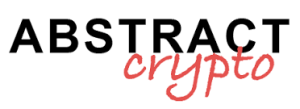Yesterday, Tether’s US dollar collateralized stablecoin, USDT, received an important confirmation.
It was provided by Howard Lutnick, CEO of Cantor Fitzgerald, to Bloomberg.
— Paolo Ardoino
(@paoloardoino) January 16, 2024
Howard and Lutnick Cantor Fitzgerald
Howard Lutnick is the president of Cantor Fitzgerald, and CEO of the bank since 1991.
Cantor Fitzgerald is a US financial company that has been in existence since 1945 and specializes in institutional equities, fixed income sales and trading, investment banking, prime brokerage, and commercial financing.
The bank has a total of 12,000 employees, is headquartered in New York, and is one of the 24 primary dealers authorized to trade US government securities with the Fed.
Lutnick was born in 1961 (now he is 63 years old), and has always worked at Cantor Fitzgerald, as he joined the company in 1983 at the age of 22 just after graduating.
Thanks to Lutnick, Cantor Fitzgerald quickly began to exploit technological innovations for its business, so much so that it launched an electronic branch as early as 1999.
In 2013, Lutnick ranked 4th among the most important people in commercial real estate finance according to Commercial Observer.
Lutnick’s confirmation on the Tether stablecoin (USDT)
Yesterday, Howard Lutnick released an interview on Bloomberg in Davos, Switzerland, where he is present to participate in the World Economic Forum.
During the interview, Lutnick talked about many things, and in particular about inflation and the Fed’s monetary policy, but at a certain point he explicitly mentioned Tether.
Before concluding the interview, Lutnick himself asked the Bloomberg interviewer to also talk a bit about crypto.
At that point, he recalled the sensational effect that ETFs had on gold about twenty years ago, and stated that even the price of Bitcoin could benefit over time from the launch of new Bitcoin spot ETFs.
What surprised the most, however, is that after talking about Bitcoin, he said that one of the crypto companies he likes the most is Tether.
Lutnick then stated that his company manages many of Tether’s assets, and from what they observe, “they have all the money they claim to have.”
In fact, therefore, it has confirmed that Tether has over ninety billion US dollars in its portfolio that collateralize USDT.
He explicitly stated:
“We saw it.”
Tether Reserves
In the past, there has always been doubt that Tether had enough US dollars in its portfolio to cover the entire market value of all issued USDT.
Furthermore, in the past, it had to face a lawsuit filed by the Attorney General of the State of New York, from which it emerged that for a brief moment in 2018 it did not have them. However, that lawsuit also effectively confirmed that in 2020 there was no evidence that the company did not have all the collateral in its portfolio.
Until a few years ago, only a small portion of USDT’s collateral was actually in cash or equivalent liquid securities, but for some time now, according to statements from external auditors who regularly examine Tether’s portfolio, it has emerged that the majority of the collateral is in liquid securities such as US government bonds.
With Lutnick’s confirmation, the case of possible insolvency of Tether is probably finally closed, as from the public information available now, it seems extremely likely that Tether holds enough funds in its portfolio to cover the value of all issued USDT.
Tether: the USDT stablecoin
Moreover, USDT has never really lost its peg with the dollar.
For example, in March of last year its main rival, USDC, temporarily lost its peg with the dollar, due to the failure of Silicon Valley Bank, where it had three billion dollars in deposits. It recovered thanks to the intervention of the Fed, which guaranteed the coverage of all deposits of all account holders of all failed US banks.
USDT, on the other hand, did not lose its peg with the dollar even in 2018, and its performance was amazing.
He made his debut in the crypto markets as early as 2015, and during the great bull run at the end of 2017, he surpassed one billion dollars in market capitalization.
In the course of 2018, it reached nearly 3 billion, in 2019 it exceeded 4 billion, and between 2020 and 2021 it skyrocketed to over 70 billion dollars, surpassing 80 billion in the first half of 2022.
After a strong capitalization reduction following the crypto market crashes in 2022, it resumed its growth in 2023, eventually surpassing 90 billion in December. It now has a market capitalization of over 94 billion dollars.



